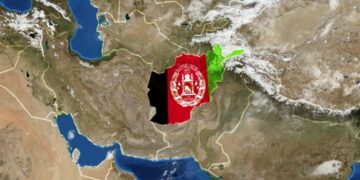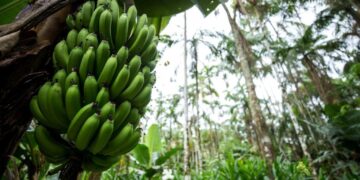Adeyemo-Eleyode V.O.;1 Adetuyi B.O.;2 Olajide P.A.;3 Chidume C.C.;4 Okunlola F.O.;5 Oni P.G.;6Awe A.I.;7 Batiha G.E.S.;8 & Eniola K.I.T.9
1Department of Biological Sciences, College of Agriculture and Natural Sciences, Joseph Ayo Babalola University, Ikeji-Arakeji (JABU), P.M.B 5006 Ilesha, Osun State, Nigeria
2Department of Natural Sciences, Faculty of Pure and Applied Sciences, Precious Cornerstone University, Ibadan, Oyo State, Nigeria
3Department of Chemistry and Biochemistry, Worcester Polytechnic Institute, Massachusetts, USA
4Department of Biology, The Catholic University of America, Washington DC, USA.
5Department of Pharmacology and Therapeutics, Faculty of Veterinary Medicines, Damanhour University, Damanhour 22511, Egypt.
*Corresponding Author Email:victoriaeleyode@gmail.com
Abstract
Biocuration is pivotal for managing large-scale biological datasets and advancing scientific discovery in genomics, proteomics, and biodiversity research. However, its practice in Africa is often constrained by limited technical expertise, underfunded research infrastructure, and a lack of standardised data management tools. Moreover, the underrepresentation of African biodiversity and health data in global databases exacerbates these challenges. This article examines the African perspective on biocuration, highlighting how local research communities are addressing these limitations through global collaborations and regional networks. Emphasis is placed on the need for culturally relevant data annotation and the integration of indigenous knowledge to ensure that biocuration supports biodiversity conservation, disease research, and sustainable agricultural practices.
Keywords: Biocurators; Africa; genomics; data security; ethical use; biodiversity conservation; disease research.
1. Introduction
Biocuration is the process of collecting, organising, annotating, and maintaining biological data, typically involving text, genetic, proteomic, molecular, and other forms of information. This process ensures that biological data are accurate, up to date, and easily accessible for research and practical applications. Biocuration influences data accuracy and the overall quality of scientific research. It plays a crucial role in fields such as microbiology, genomics, biochemistry, conservation, molecular biology, agriculture, bioinformatics, and food science and technology. However, when viewed from an African perspective, there are several considerations related to safety, limitations, and ethical issues.
Africa is home to a vast array of genetic diversity, which is critical for understanding the genetics of humans, microbes, and plants, as well as disease susceptibility and responses to treatments. However, many global databases that include text, images, and genetic information have historically underrepresented African populations. Biocuration in African contexts must prioritise the accurate representation of African textual, image, and genetic data, among other data sets, to avoid skewing research outcomes and to ensure that therapies, diagnostics, and research findings are globally applicable.
Biological data are critical to modern scientific research, enabling advances in areas such as genomics, proteomics, medicine, agriculture, and biodiversity studies. The sheer volume and complexity of biological data produced by diverse research methodologies, such as high-throughput sequencing technologies, necessitate rigorous organisation and administration. A crucial subfield of bioinformatics known as biocuration is essential in this context. Biocuration is the systematic process of gathering, annotating, validating, and sharing biological data so that researchers can utilise, understand, and build upon it. In doing so, biocuration lays the groundwork for advancing scientific discoveries and encouraging innovation across many domains by integrating diverse information (see Figure 1).
Fundamentally, biocuration involves obtaining, validating, and arranging biological data into publicly accessible databases using both computational and manual methods. This process enables the combination of disparate pieces of information from experiments, scholarly publications, and computational predictions into coherent archives that serve as valuable tools for researchers. By using strict validation standards and facilitating study repeatability, biocuration guarantees the integrity and dependability of biological data.
Driven by developments in next-generation sequencing (NGS) technologies and multi-omics methods, biological datasets continue to expand exponentially, making accurate and rapid biocuration more important than ever. For genomic annotation, drug discovery, and disease research, databases such as GenBank and UniProt offer carefully curated datasets that are absolutely essential. These resources enable researchers to identify molecular pathways underlying complex biological processes, predict protein structures, and detect genetic variants. Furthermore, preserving data integrity and ensuring interoperability among various research fields depend on biocuration. Through the use of controlled vocabularies, ontologies, and standardised formats, biocurators help researchers derive important insights from multiple datasets and promote cross-disciplinary cooperation. Consequently, biocuration forms the backbone of bioinformatics, enabling researchers to address urgent global issues such as food security, environmental preservation, and disease outbreaks.

Figure 1: Types of Biocuration Data (Source: Self-developed)
2.The Global Role of Biocuration in Advancing Scientific Research
Biocuration has transformed scientific research worldwide by providing centralised platforms for biological data access, analysis, and sharing. Leading projects, including the Gene Ontology (GO) and the Protein Data Bank (PDB), have demonstrated the transformative power of biocuration in molecular biology and functional genomics (Berman et al., 2000; Ashburner et al., 2000). These systems enable scientists to investigate protein structures, annotate gene functions, and elucidate the molecular mechanisms that guide cellular activities. In the field of genomics, the Human Genome Project is a prime example of how biocuration has facilitated the discovery of genetic causes of human disorders. Through meticulous annotation and integration of genomic data, researchers have identified disease-associated variations and developed targeted treatments for conditions such as cancer, cardiovascular diseases, and rare hereditary disorders (Wilson et al., 2021; Collins et al., 2003). Similarly, biocuration has been instrumental in identifying biomarkers and therapeutic targets, thus expediting the development of personalised medicine and improving patient outcomes (Ginsburg & Willard, 2009).
Beyond medicine, biocuration plays a crucial role in biodiversity research and environmental conservation. Databases such as the Global Biodiversity Information Facility (GBIF) and the Catalogue of Life rely on curated species data to monitor ecosystems, assess the impacts of climate change, and guide conservation strategies (Schulze et al., 2018; Segal, 2011). In agriculture, curated datasets of crop genomes and pest information have informed breeding programmes and pest management practices, thereby contributing to food security and sustainable farming (Plaza et al., 2018).
3. Why Biocuration is Critical for Africa
Despite notable advancements in biocuration worldwide, its implementation and impact in Africa remain underdeveloped. This is particularly concerning given the continent’s significant biological diversity, unique ecosystems, and urgent health challenges. Africa hosts a diverse range of endemic species and exhibits substantial genetic diversity; however, a large portion of this biological richness is underrepresented in global databases (Adetunji et al., 2023; Karikari et al., 2016). African researchers face significant obstacles in obtaining data that are relevant to their local contexts, thereby impeding progress in biodiversity conservation, disease research, and agricultural innovation.
Biocuration has the potential to significantly improve the management of diseases that disproportionately affect African populations, including malaria, HIV/AIDS, and sickle cell anaemia. Curating genomic data from African populations enables researchers to identify genetic predispositions to diseases, develop region-specific treatments, and enhance diagnostic tools (Karikari et al., 2016). However, insufficient investment in biocuration infrastructure, technical expertise, and standardised tools presents considerable obstacles to realising these benefits.
Habitat loss, climate change, and overuse also threaten Africa’s biodiversity. Through species distribution cataloguing, population trend tracking, and the identification of priority regions for protection, biocuration can support conservation efforts (Schulze et al., 2018). Yet, the lack of comprehensive biodiversity databases for Africa limits the capacity of researchers and policymakers to make informed decisions regarding resource management and conservation. Furthermore, by enhancing crop resilience and pest control, biocuration provides a powerful tool for addressing food security issues in agriculture. For instance, well-curated collections of pest-resistant strains and drought-tolerant crop varieties can guide breeding initiatives and agricultural practices, thereby mitigating the effects of climate change on agriculture (Plaza et al., 2018). Nevertheless, Africa’s ability to capitalise on these advantages and achieve sustainable development targets is hindered by the absence of coordinated biocuration initiatives across the continent. Addressing these challenges will require a concerted effort to build local capacity, invest in biocuration infrastructure, and promote international cooperation. By prioritising African data in global archives and empowering local researchers, biocuration can unlock Africa’s scientific potential and drive progress in environmental sustainability, health, and agriculture.
4. Recommendations
To fully harness the potential of biocuration in Africa, several strategic actions are recommended:
- Integration of Indigenous Knowledge Systems: Incorporate culturally and contextually relevant indigenous knowledge into biocuration practices. Recognising and integrating traditional ecological insights not only enriches data sets but also ensures that biocuration efforts are inclusive and reflective of local realities.
- Investment inInfrastructure and Technology: African research institutions and governmental bodies should prioritise funding for modern biocuration infrastructures, including high-speed data processing systems, cloud storage solutions, and secure networks. Upgrading computational resources and laboratory equipment will enable the effective handling of large datasets and the integration of diverse data types.
- Capacity Building and Training Programmes: Establish comprehensive training programmes and workshops that focus on both the technical and ethical aspects of biocuration. This should include the development of specialised curricula in universities and research centres to train new biocurators, as well as continuous professional development for existing personnel. Leveraging online courses and regional training hubs can further extend these opportunities across the continent.
- Development of Standardised Tools and Protocols: The adoption and creation of standardised protocols for data collection, annotation, and sharing are essential. Collaborative efforts between African institutions and international partners should be promoted to adapt global standards to the unique challenges of African biodiversity and health data.
- Creation of Regional Biocuration Hubs: Establish localised biocuration centres that serve as focal points for data management, quality assurance, and collaborative research. These hubs could facilitate the sharing of best practices and serve as nodes within regional networks, ultimately enhancing the representation of African data in global repositories.
5. Conclusion
Biocuration is an indispensable process that underpins modern biological research by transforming raw data into actionable knowledge. In Africa—where the richness of biodiversity and the urgency of addressing health and agricultural challenges are pronounced—effective biocuration holds immense promise for advancing scientific discovery and driving sustainable development. Despite obstacles such as limited infrastructure, underfunding, and gaps in technical expertise, the proactive engagement of African biocurators through regional hubs, capacity building, and international collaborations is paving the way for a more robust and inclusive biocuration landscape.
By implementing the recommendations outlined above, Africa can enhance the quality and accessibility of its biological data, thereby contributing significantly to global research efforts. Ultimately, advancing biocuration in Africa is not only a scientific necessity but also a vital step towards informed decision-making in biodiversity conservation, disease management, and sustainable agricultural practices.
References
Adetunji, C. O., Egbuna, C., Ajiboye, A. A., Ajayi, O. O., Dauda, W. P., Ghazanfar, S., Ogundolie, F. A., Mathew, J. T., Adetunji, J. B., Inobeme, A. T., Olaniyan, O. T., Ijabadeniyi, O. A., Aborode, A. T., Ficai, A., Akram, M., Bodunrinde, R. E., Umme, Laila, U., Olaniyan, O. P., Micheal, O. S., & Adetuyi, B. O. (2023). Chapter Twenty-Five—Biogenic nanomaterials with diverse biological activities in the food and biomedical industries. In Evaporative coolers for the postharvest management of fruits and vegetables (pp. 395–420).
Ashburner, M., Ball, C. A., Blake, J. A., Botstein, D., Butler, H., Cherry, J. M., … & Sherlock, G. (2000). Gene ontology: Tool for the unification of biology. Nature Genetics, 25(1), 25–29.
Berman, H. M., Westbrook, J., Feng, Z., Gilliland, G., Bhat, T. N., Weissig, H., & Shindyalov, I. N. (2000). The Protein Data Bank. Nucleic Acids Research, 28(1), 235–242.
Collins, F. S., Morgan, M., & Patrinos, A. (2003). The Human Genome Project: Lessons from large-scale biology. Science, 300(5617), 286–290.
Ginsburg, G. S., & Willard, H. F. (2009). Genomic and personalised medicine: Foundations and applications. Translational Research, 154(6), 277–287.
Karikari, T. K., Nkrumah, B., & Nguah, S. B. (2016). Genomic databases from African populations: The opportunity for Africa. Molecular Biology Reports, 43(4), 721–731.
Plaza, J. A., Cubero, J. I., & Loureiro, M. E. (2018). The role of biocuration in sustainable agriculture. Agricultural Systems, 163, 126–133.
Schulze, S., Schuffenhauer, S., & Luque, J. A. (2018). Biodiversity data curation and conservation. Ecology, 99(8), 2121–2129.
Segal, M. (2011). Accessing microbiological data: A user’s perspective. In P. F. Uhlir (Ed.), Designing the microbial research commons: Proceedings of an international symposium (pp. [page numbers if available]). Washington, DC: National Academies Press.
The Gene Ontology Consortium. (2000). Gene ontology: Tool for the unification of biology. Nature Genetics, 25(1), 25–29.
Wilson, S. L., Way, G. P., Bittremieux, W., Armache, J.-P., Haendel, M. A., & Hoffman, M. M. (2021). Sharing biological data: Why, when, and how. FEBS Letters, 595(7), 847–863.
About this Article
Cite this Article
APA
Adeyemo-Eleyode V.O., Adetuyi B.O., Olajide P.A., Chidume C.C., Okunlola F.O., Oni P.G., Awe A.I., Batiha G.E.S. & Eniola K.I.T. (2025). Biocuration: African Perspectives, Safety, Limitations. In Akinyele B.J., Kayode R. & Akinsemolu A.A. (Eds.), Microbes, Mentorship, and Beyond: A Festschrift in Honour of Professor F.A. Akinyosoye. SustainE
Chicago
Adeyemo-Eleyode V.O., Adetuyi B.O., Olajide P.A., Chidume C.C., Okunlola F.O., Oni P.G., Awe A.I., Batiha G.E.S. and Eniola K.I.T. 2025. “Biocuration: African Perspectives, Safety, Limitations” In Microbes, Mentorship, and Beyond: A Festschrift in Honour of Professor F.A. Akinyosoye, edited by Akinyele B.J., Kayode R. and Akinsemolu A.A., SustainE.
Received
15 December 2024
Accepted
10 January 2025
Published
4 February 2025
Corresponding Author Email: victoriaeleyode@gmail.com
Disclaimer: The opinions and statements expressed in this article are the authors’ sole responsibility and do not necessarily reflect the viewpoints of their affiliated organizations, the publisher, the hosted journal, the editors, or the reviewers. Furthermore, any product evaluated in this article or claims made by its manufacturer are not guaranteed or endorsed by the publisher.
Distributed under Creative Commons CC-BY 4.0
Share this article
Use the buttons below to share the article on desired platforms.














